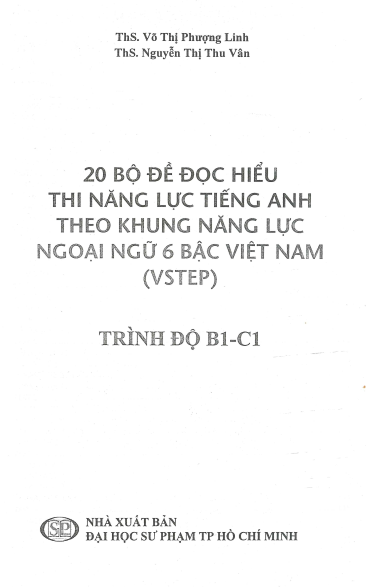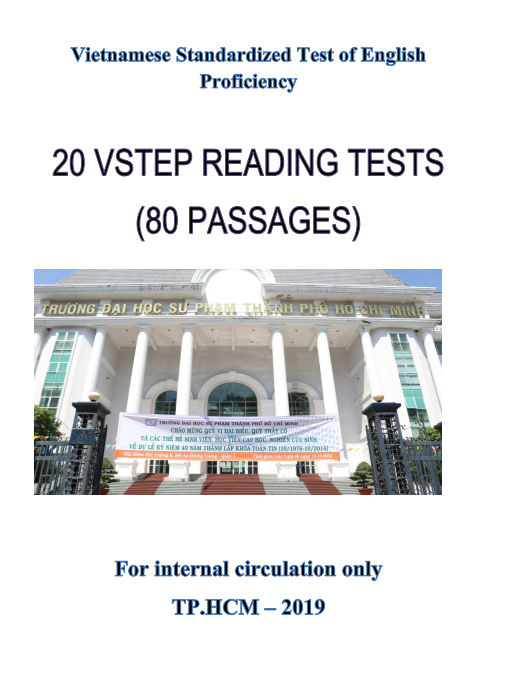


TEST 1
PASSAGE 1
It is commonly believed in the United States that school is where people go to get an education. Nevertheless, it has been said that today children interrupt their education to go to school. The distinction between education and schooling is made by the remark that schooling is a specific, formalized process, whose general pattern varies little from one setting to the next. Throughout a country, children arrive at school at approximately the same time, take assigned seats, use similar textbooks, do homework, take exams, and so on. The slices of reality that are to be learned, whether they are in the form of information or understanding, in the textbooks and the workbooks, have usually been limited by the boundaries of the subject being taught. For example, high school students know that they are not likely to find out in their classes the answer to what the newest truth about political problems in their communities is. There are definite conditions surrounding the formalized process of schooling.
It is a familiar process, a process that goes on before the start of school, and one that should be an integral part of one’s entire life.
Education is much more open-ended and all-inclusive than schooling. Education knows no bounds. It can take place anywhere. Whether in the shower or on the job, whether in a kitchen or on a tractor, it includes both the formally learning that takes place in schools and the whole universe of informal learning. The agents of education can range from a revered grandparent to the people debating politics on the radio, from a child to a distinguished scientist.
Whereas schooling has a certain predictability, education quite often produces surprises. A chance conversation with a stranger may lead a person to discover how little is known by others religions. People are engaged in education from infancy on. The general education from infancy on, education, then, is a very broad inclusive term.
Questions
- What is the main idea of the passage?
A. The best schools teach a wide variety of subjects.
B. Education and schooling are quite different experiences.
C. Students benefit from schools, which require long hours and homework.
D. The more years students go to school, the better their education is. - What does the author probably mean by using the expression children interrupt their education to go to school (line 3)?
A. Going to several different schools is educationally beneficial.
B. School vacations interrupt the continuity of the school year.
C. Summer school makes the school year too long.
D. All of life is an education. - The word bounds in line 6 is closest in meaning to
A. rules
B. experience
C. limits
D. exceptions - The word chance in line 12 is closest in meaning to
A. unplanned
B. unusual
C. lengthy
D. lively - The word an integral in line 16 is closest in meaning to
A. an equitable
B. a profitable
C. a pleasant
D. an essential - The word they in line 21 refers to
A. slices of reality
B. similar textbooks
C. boundaries
D. seats
PASSAGE 2
By inserting optical fibers through natural openings or small incisions and threading them along the body’s window into the living tissues of the body. By inserting optical fibers through natural openings or small incisions, physicians can look into the lungs, intestines, heart, and other areas that were formerly inaccessible to them. These ultra-thin, flexible fibers have opened a revolutionary medicine. These ultra-thin, flexible fibers have opened just as optical fibers have transformed communication, they are also established pathways.
Questions
- The passage is organized by
A. listing and discussing several educational problems
B. education formal education, people would remain ignorant
C. going to school is only part of how people become educated
D. education involves many years of professional training - The writer seems to agree that
A. schooling is more important than education
B. education is not as important as schooling
C. schooling is limited and more informal
D. education is more influential than schooling
PASSAGE 3 (Fiber-optics)
The basic fiber-optics system is called a fiberscope, which consists of two bundles of fibers. One, the illuminating bundle, carries light to the tissues. It is coupled to a high-intensity light source. Light enters the cores of the high-purity silicon glass and travels along the fibers. A lens at the end of the bundle collects the light and focuses it into the other bundle, the imaging bundle. Each fiber in the bundle transmits only a tiny fraction of the total image. The reconstructed image can be viewed through an eyepiece or displayed on a television screen. During the last five years, improved methods of fabricating optical fibers have led to a reduction in fiberscope diameter and an increase in the number of fibers, which in turn has increased resolution.
Optical fibers can also be used to deliver laser light. By use of laser beams, physicians can perform surgery inside the body, sometimes eliminating the need for invasive procedures in which healthy tissue must be cut through to reach the site of disease. Many of these procedures do not require anesthesia and can be performed in a physician’s office. These techniques have reduced the risk and the cost of medical care.
Questions
11. What is the main subject of the passage?
A. The role of optical fibers in medicine
B. New surgical techniques
C. The invention of optical fibers
D. A revolution in communication
12. In line 2, the author uses the expression have opened a window to indicate that the use of optical fibers
A. has been unknown to the general public quite recently
B. sometimes requires a surgical incision
C. allows doctors to see inside the body without major surgery
D. has enabled scientists to make amazing discoveries
13. Which of the following is closest in meaning to the word formerly in line 6?
A. previously
B. usually
C. occasionally
D. near
14. Where is the lens located?
A. at the end of the imaging bundle
B. at the end of the illuminating bundle
C. in the middle of the fiberscope
D. in the television screen
15. According to the passage, what is the advantage of fiber-optics surgical techniques?
A. They are often inexpensive and require no anesthesia.
B. They are relatively new and more effective.
C. They avoid the need to cut through healthy tissues.
D. They can be done in any hospital.
16. The word they in line 13 refers to
A. techniques
B. physicians
C. procedures
D. diseases
17. It can be inferred from the passage that
A. fiber-optics will replace all surgical techniques in the future
B. fiber-optics will play an increasingly important role in medicine
C. laser beams are safer than ordinary light
D. fiber-optics are too expensive for most hospitals



